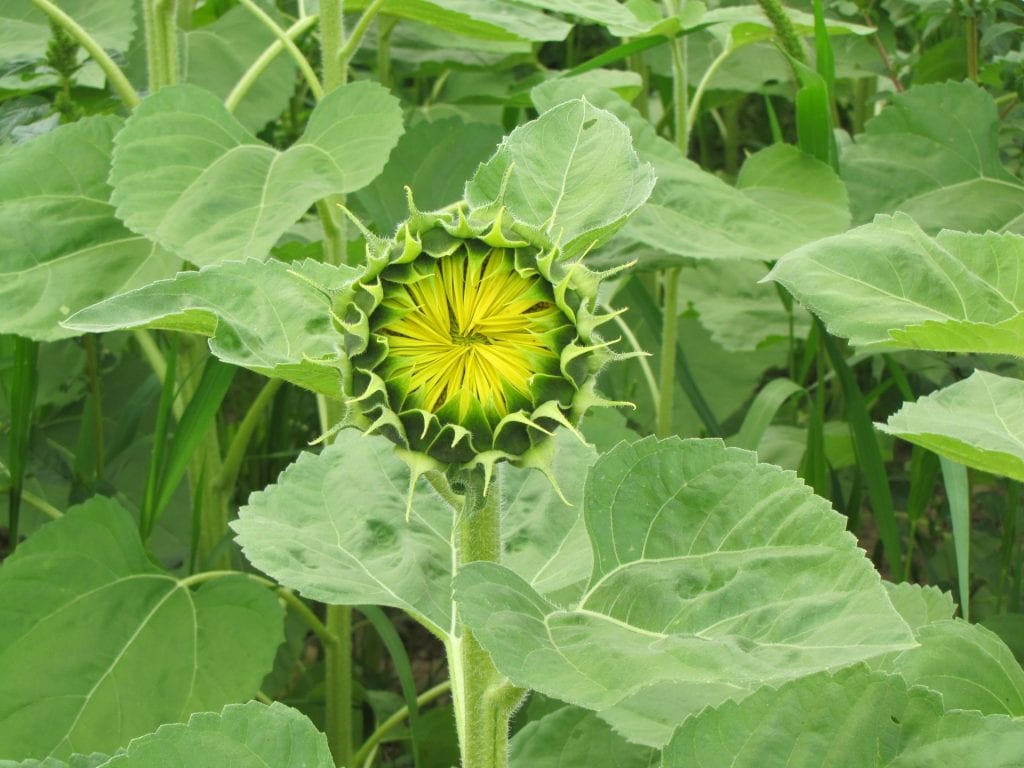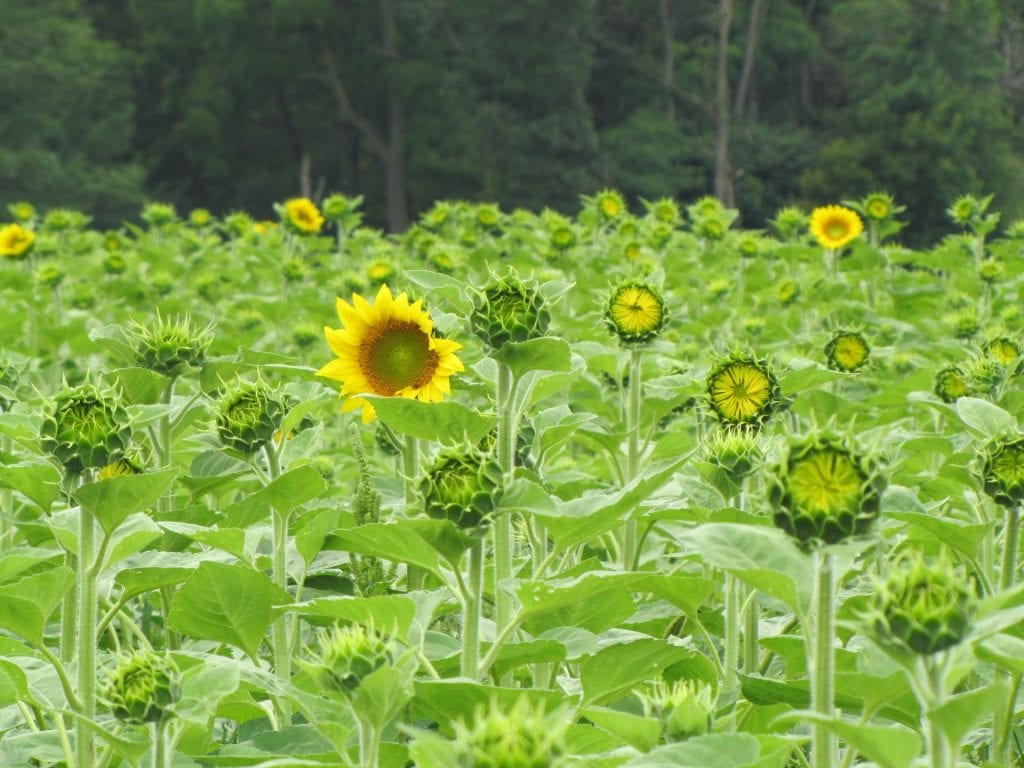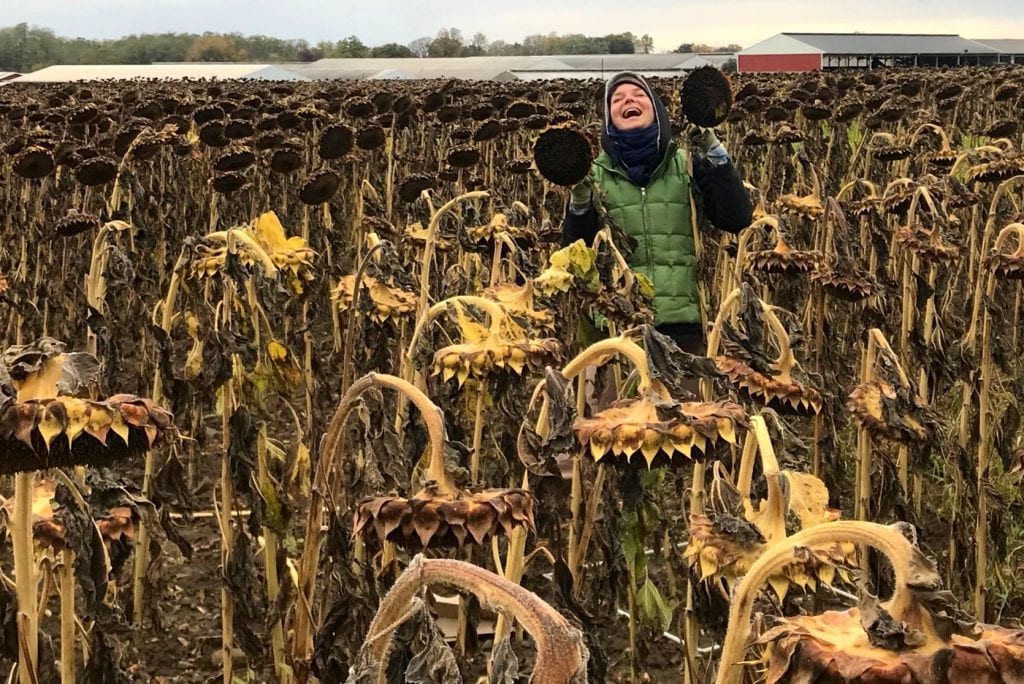Key to building resilient agro-ecological farming systems is a diverse crop rotation. Part of our work explores crops less commonly grown in our bioregion to explore productivity and market potential in organic production systems.
Building resilient regional dry bean production systems through applied research and farmer-to-farmer learning.
Goal: To increase the sustainability of the organic dry bean industry in the Northeast and Upper Midwestern regions by overcoming production challenges and developing improved management practices that build soil health and resilience to climate change.
Activities:
- Variety trials of expanded dry bean market classes, including specialty and heirloom varieties
- Agronomic research to optimize organic no-till methods for dry bean
- Diverse learning opportunities via webinars, videos and field days.
Learn more about our dry bean work and sign up for our e-list at the ECOBEAN project site:

Organic Sunflower Production in the Northeast United States
Did you know that sunflower is the only major grain crop that originated in North America? Sunflower is a versatile crop that is fairly drought tolerant. The seeds from oilseed sunflower can be processed into vegetable oil, biofuel, and livestock feed, while the seeds from confectionary sunflower can be eaten whole or ground into nut butter. The majority of US sunflower production occurs in the western and northern Great Plains. Agronomic practices are well-established for conventional production in areas where sunflower is a common component of crop rotations, but few organic recommendations exist. Given consumer interest in diverse options for nut butters, organic products, and local food, there is a need for more information about growing organic confectionary sunflowers in the northeast United States.
Developing organic sunflower management recommendations could help local farmers increase their crop diversity and expand market opportunities.
Comparing seeding rates and varieties
The goal of this work with sunflower was to help answer basic agronomic questions about seeding rate to optimize sunflower production. Using organic management practices, in 2016 and 2017, we compared the effects of two confectionary sunflower varieties planted at two seeding rates on weed biomass and yield in a field experiment conducted at the Cornell Musgrave Research Farm. We hypothesized that weed biomass would be lower and seed yield would be greater in the high seeding rate compared to the low seeding rate treatment, and that this result would be consistent across varieties.
We planted one sunflower trial in 2016 and two trials in 2017, each in a randomized complete block design. We planted two different confectionary varieties of sunflower, Badger DMR and N5LM307, at two different rates (24,680 and 34,800 seeds/ac) in each trial.
Traits measured: plant density, seed yield, and weed density for each variety at each planting rate.
What did we find?
We found that the high planting rate of sunflower had slightly lower weed densities than did the low planting rate, which partially supports our hypothesis. However, in the variety Badger DMR, weed biomass did not differ between the two seeding rates. We did not find that sunflower seed yield was greater in the higher seeding rate. Finally, the varieties Badger DMR and N5LM307 did not yield differently from each other.
Farmer recommendations
In sunflower, weeds can hinder harvesting,reduce sunflower seed quality, and increase the likelihood that future years of production will be weedy by adding to the soil weed seedbank. However, we recommend that farmers weigh the potential weed suppression benefits of a higher seeding rate against additional seed costs. Farmers might also consider market preference, as planting rate can affect seed size. Larger seeds are typically preferred for whole seed confectionary sunflower seed markets, whereas seed size might not influence market price for sunflower seed that is used to make sunflower butter.
Future plans with sunflowers include growing them using organic no-tillage practices. It is also important to explore the relationship of harvested seed size with planting density, variety, and weed management. Large confectionary seeds (>0.5 inch) attract higher prices and can be sold in-shell. If seed size decreases in higher density plantings, this would be an important trade-off to examine. Finally, the influence of planting date on yield and weed management could be another facet to explore.








